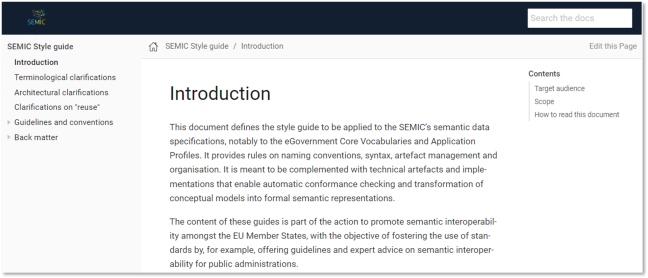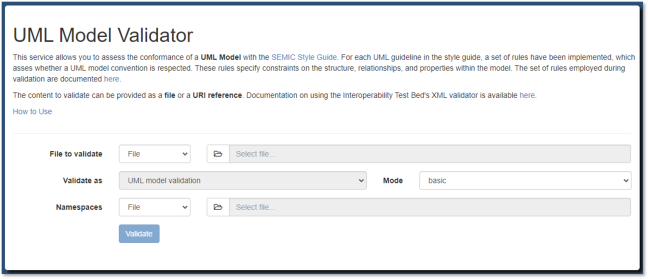

In collaboration with the Interoperability Test Bed, SEMIC has launched a new validator for the validation of UML models against the guidelines of the SEMIC Style Guide.

The mission of SEMIC is to foster semantic interoperability through the definition of common semantic specifications and the sharing of knowledge and best practices on their application. A significant step in this direction is SEMIC’s Style Guide, which defines guidelines in support of semantic engineers for the reuse and extension of SEMIC specifications, such as the eGovernment Core Vocabularies, to address their specific semantic needs.

A user specialising SEMIC’s semantic specifications typically begins with a modelling step to capture requirements and express customisations and extensions. Such models are meant to define the details of ontologies and application profiles, capturing entity classes, properties, but also constraints that would result in SHACL shape definitions. Although not explicitly designed to serve semantic engineering, this modelling work is often based on the Unified Modelling Language (UML), due mostly to UML’s simplicity, flexibility and wide-scale tooling support. Such UML modelling tools typically support the XML Metadata Interchange (XMI) format as a means of expressing models in a portable manner across different modelling tools.
To facilitate this semantic modelling work in UML, the SEMIC team in collaboration with the Interoperability Test Bed, published a new validator that takes as input a UML model defined in XMI syntax and validates it against the SEMIC Style Guide’s modelling guidelines. The produced validation report allows semantic engineers to pinpoint issues in their design and more easily apply the SEMIC Style Guide’s best practices.

The new UML model validator is built over the Test Bed’s reusable XML validator. In the same way as all validators based on the Test Bed’s core validator components, the UML model validator enables validation of models over multiple APIs, specifically:
The UML model validator is the latest in a series of validators that allow validation of a model against prescribed guidelines. Similar services are available in support of the EIRA, for the validation of ArchiMate® models against guidelines based on the EIRA, eGovERA and ELAP by means of, respectively, the EIRA validator, eGovERA validator and ELAP validator.
If you are interested in seeing how the UML model validator was built, and potentially in following a similar approach for a new validator, you are invited to check out the Test Bed’s step-by-step XML validation guide. In fact similar guides exist for validators based on other common syntaxes, notably RDF, JSON and CSV. Regarding the Test Bed itself, general details on its services can be found in its Joinup space, with its value proposition being a good starting point for newcomers. Finally, if you are interested in receiving the Test Bed’s news, apart from subscribing to notifications through Joinup, you may also follow the Interoperable Europe’s social media channels (X, LinkedIn) for updates on the Test Bed and other interoperability solutions.